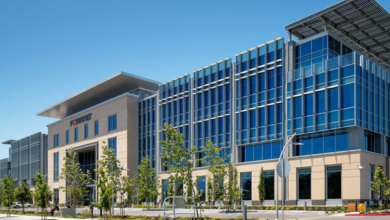Doing things differently with mobility
There’s no doubt that the challenge of doing more for less, changing the way you work and improving citizen services is massive. Just how can you achieve this across a diverse geographic spread, range of services and citizen needs?
Going mobile is changing the way we work. No longer do we need to be tied to a physical office. We’ve already made the move to mobile smart devices and we’re now at the point where the device itself becomes irrelevant. We expect to be able to work anywhere, on any device with a truly virtual workspace and securely share, collaborate and communicate.
Imagine if the mix of office workers, field operatives and mobile employees who are responsible for delivering services to citizens could access all your systems and data wherever they are, using any device to deliver more and better services? You can take your services closer to the citizen – whether it’s housing repairs, social care or another public service. This is what true mobility can enable.
With a mobile enabled workforce you can make significant savings too. With no more need for everyone to have a physical desk, you can reduce office space, save on rent or move to smaller premises. By empowering your employees to be mobile, they can be productive wherever they are, saving budget, time and your carbon footprint. That’s reducing cost and improving services.
Managing mobility
Mobile devices have become indispensable tools and many core applications are now delivered via mobile platforms in addition to, or in preference to, traditional desktop devices delivering enhanced agility, productivity, innovation and supporting the way we want to work.
By adopting a greater number and range of mobile devices, it becomes more important to manage them and the different mobile platforms, including iOS, Android and Windows. This means that those in charge of IT have a more complex challenge and need to find a way to manage not only the devices, but their applications and content.
Addressing security
This shift in working practice brings challenges around securing and managing the range of devices, apps and content. Add to this the differing ways in which devices are owned – bring your own device (BYOD) and choose your own device (CYOD) – and the challenge gets bigger.
Security is not just about encryption, data integrity or even just having a secure connection. You must ensure that all devices, accessing wireless networks, are properly authenticated. As this becomes more complex, it can be wise to use a managed service provider who has the expertise and experience in integrating and managing mobility solutions. For compliance purposes, you’ll want to be sure that your data is secure so you’ll need a UK-based cloud environment that guarantees data sovereignty and meets relevant regulation. Managed services can protect your enterprise data end-to-end; from securing the device and network through to delivering secure data centre services.
What will mobility enable?
Productivity – with mobile community workers you can not only take the service to the citizen but you can complete more appointments in a day than if you have to make frequent trips back to an office. It has been found that organisations gain an extra hour of work per year from employees due to mobile working and an increase in productivity which can significantly enhance service delivery.
Citizen expectations – as mobile working becomes the norm it will be vital to keep up with your citizens’ expectations – they will expect to access and receive services, not only digitally, but from anywhere. If your employees can be more productive, enhance the citizen experience and deliver more services to more people you’ll be meeting your challenges.
Employee engagement and retention – we’re already seeing the working environment taking precedence over the salary as more technology-aware employees expect to be able to work from anywhere, at any time and on any device. Those that are able to offer this could find it easier to attract and retain the best employees.
Reduce costs – with a truly mobile workforce you can take the opportunity to rationalise office space – perhaps moving to smaller, less expensive property or a different area. With ‘pay-as-you-go’ pricing you only pay for what you use so from mobility management to cloud capacity you no longer have to tie up precious funds in unutilised assets.
What services contribute to enterprise mobility?
Microsoft Windows 10 is set to transform the IT end-user experience – putting the user first in all IT design and delivery. It brings a new applications platform, security features, methods of interaction and management tools as well the move to Windows as a service with frequent feature releases and a farewell to major version upgrades. It will create a future-proofed, continuously evolving platform; the evergreen operating system. With a dynamic interface that switches between PC-friendly desktop and tablet mode and which works on all devices, a seamless workflow is created between devices further supporting mobility and collaboration.
Enterprise mobility management – enabling the ‘right’ experience and the right balance between security and a great user experience is key. But security is not just about encryption, data integrity or even just having a secure connection. You need to ensure that all devices and network access are properly authenticated. The boundaries of IT control are shifting, but expectations of stable, secure services remain. Mobile device management is the solution to balancing these demands and achieving true enterprise mobility.
Cloud services – a cloud infrastructure is the catalyst for the majority of IT solutions that enable mobility. Cloud is already becoming the norm and there is a rising trend of the adoption of both hosted private cloud, such as Capita Private Cloud and its hybrid cloud counterparts.
Public cloud offers convenience, straightforward setup and access. Generally one size fits all and there is no ability to mix different levels of service, security or data sovereignty. Private cloud has many of the same public cloud features but you know exactly where your data is and who has access to it so you have reassurance of data sovereignty, security and governance. Hybrid cloud is a “best fit” approach where you pick and choose elements from either public or private cloud or a combination.
Collaboration & communication is made dynamic and engaging by using mobile technology and cloud delivery. There are a vast number of services that can enhance the way an organisation shares, collaborates and communicates between teams, employees and with customers. Whether you use individual services such as telepresence and instant messaging or an integrated suite of collaboration tools – the ability to share, edit and distribute documents and knowledge while on the move or in remote locations is a must for today’s public sector.
At Capita, we understand that managing mobility is about more than just managing mobile devices. We go beyond mobility to integrate services that suit you, helping you identify the right solution, and guiding you through the transition or migration process.






